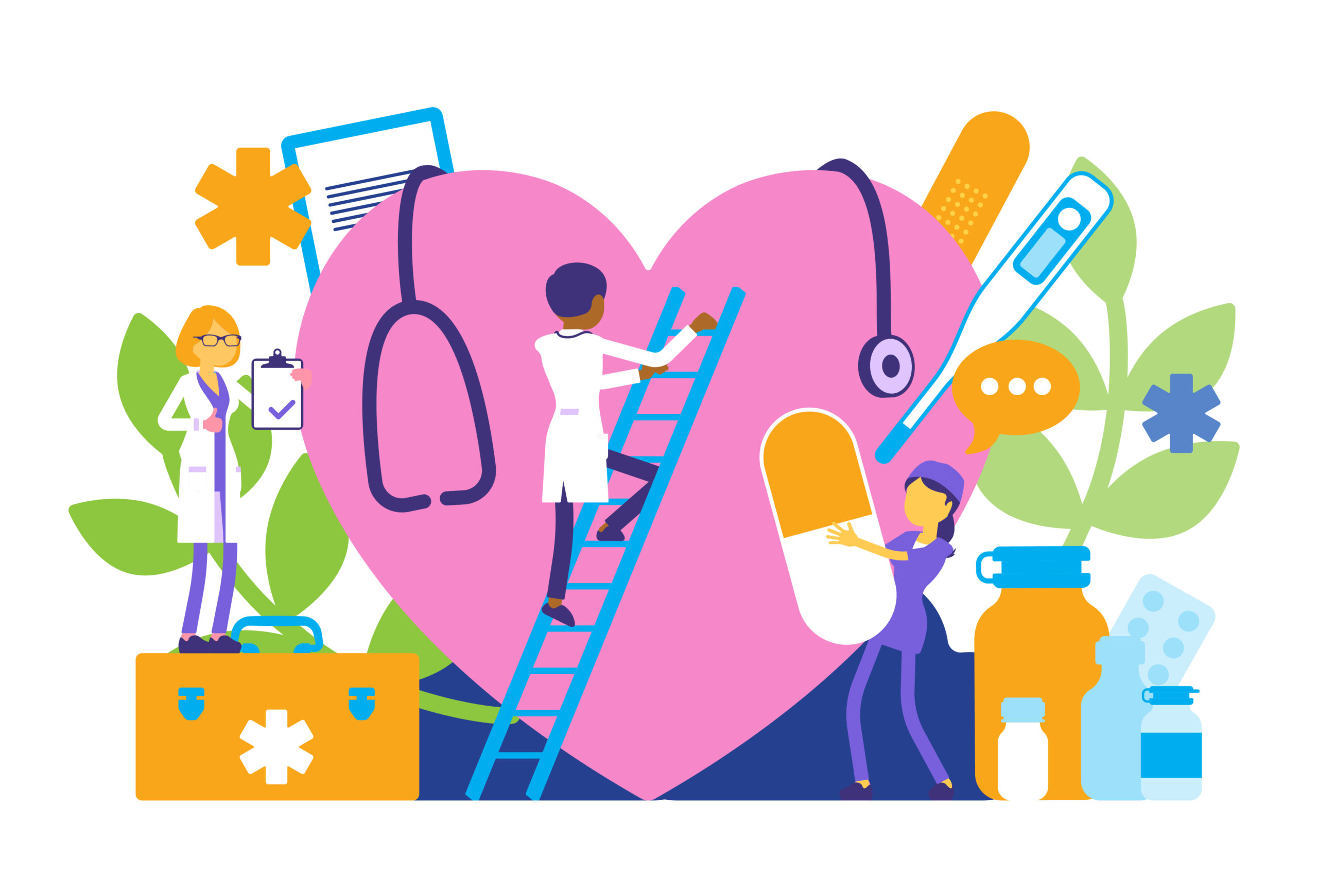Here are three simple practices that healthcare workers can use in the middle of a chaotic time—or in the middle of serious challenges. These practices are not a Band-Aid or a fix for anything in particular. They’re an acknowledgment that when we’re knocked off balance and we’re caught up in stress, there’s some value to having tools at hand that we can use to settle ourselves in any given moment.
A Simple Breathing Practice
With each movement of the breath, there is a physical sensation and that sensation is always here. It’s a way to adjust and come back to what we are meant to be doing in the next moment. Or, what would be the most valuable thing we can do for ourselves or for someone else.
Take the next seven breaths with that perspective.
- Start wherever you are—you can be sitting or standing.
- Breathe in one, breathe out one.
- Continue with this rhythm for seven breaths.
This is something you can come back to after a crisis, or before going into a challenging moment—it’s a way to ground yourself and find a way to settle down.
A Mindful Way to Wash Your Hands
Each time you wash your hands during the day can be an opportunity to catch a break for a few seconds. There’s nothing to do or fix or change. Instead, it can be a point of rest.
- Bring your awareness to the physical sensation of the hot water and soap.
- Acknowledge this experience as something that’s real and right now.
- Incorporate a counting exercise if you can by washing your hands for the recommended 30 to 40 seconds.
And again, we’re not trying to force ourselves to feel anything. There’s an aspect of mindfulness practice that’s simply acknowledging our experience.
The Doorknob or S.T.O.P. Practice
This practice starts with the assumption that if we can get out of autopilot mode, see with clarity, and practice being settled, then we’re going to understand what needs to be done or maybe that it’s not the time to be doing something.
S – Stop what you’re doing.
T – Take a few breaths.
O – Observe and check in with what’s going on around you.
P- Pick how to proceed. Ask yourself, “What’s the most skillful thing to be doing next?”
In medicine, it’s often called a doorknob practice because it only takes a few moments. Each time you put your hand on a doorknob to enter a room for the next experience with another human being, whether it’s a patient visit or an administrative meeting, you can take that S.T.O.P. practice and remind yourself: Stop. Take a few breaths. Observe and notice how things are. Pick how to proceed with intention.
read more
Mindfulness for Healthcare Professionals
Accessible mindfulness and mindful healthcare practices, meditations, and resources for healthcare workers.
Read More
Free Mindfulness Resources to Find Calm and Nourish Resilience During the COVID Outbreak
Whether you’re looking for live guided meditations connecting you to others, a quick practice to help you find your ground, or a free course on how to meditate, here’s how the Mindful community is coming together to serve in the days and weeks ahead.
Read More










